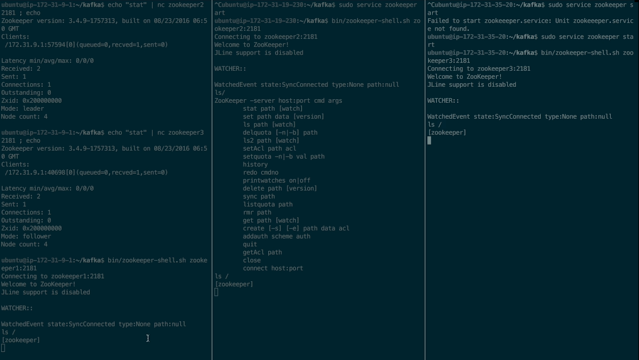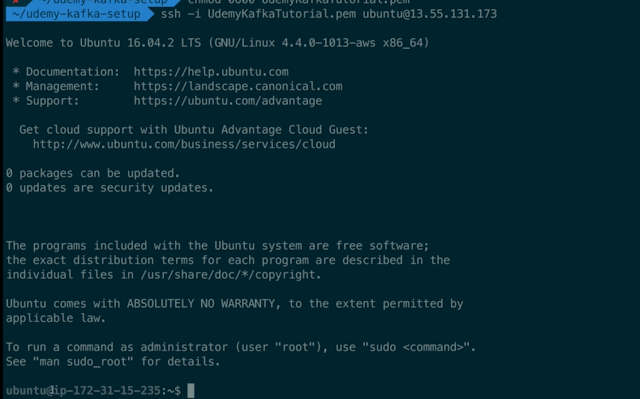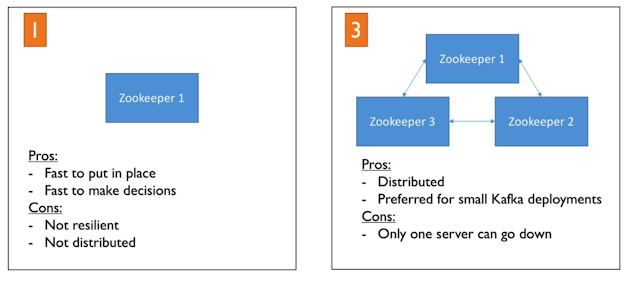1. Create an AMI (image) from the existing machine
2. Create other 2 machines, and launch Zookeeper on them
3. Test that the Quorum is running and working
nano /home/ubuntu/kafka/config/zookeeper.properties# the location to store the in-memory database snapshots and, unless specified otherwise, the transaction log of updates to the database.
dataDir=/data/zookeeper
# the port at which the clients will connect
clientPort=2181
# disable the per-ip limit on the number of connections since this is a non-production config
maxClientCnxns=0
# the basic time unit in milliseconds used by ZooKeeper. It is used to do heartbeats and the minimum session timeout will be twice the tickTime.
tickTime=2000
# The number of ticks that the initial synchronization phase can take
initLimit=10
# The number of ticks that can pass between
# sending a request and getting an acknowledgement
syncLimit=5
# zoo servers
# these hostnames such as `zookeeper-1` come from the /etc/hosts file
server.1=zookeeper1:2888:3888
server.2=zookeeper2:2888:3888
server.3=zookeeper3:2888:3888
bin/zookeeper-server-start.sh config/zookeeper.propertiessudo mkdir -p /data/zookeeper
sudo chown -R ubuntu:ubuntu /data/
# declare the server's identity
echo "1" > /data/zookeeper/myid
# edit the zookeeper settings
rm /home/ubuntu/kafka/config/zookeeper.properties
nano /home/ubuntu/kafka/config/zookeeper.properties
# restart the zookeeper service
sudo service zookeeper stop
sudo service zookeeper start
# observe the logs - need to do this on every machine
cat /home/ubuntu/kafka/logs/zookeeper.out | head -100
nc -vz localhost 2181
nc -vz localhost 2888
nc -vz localhost 3888
echo "ruok" | nc localhost 2181 ; echo
echo "stat" | nc localhost 2181 ; echo
bin/zookeeper-shell.sh localhost:2181
# not happy
ls /















